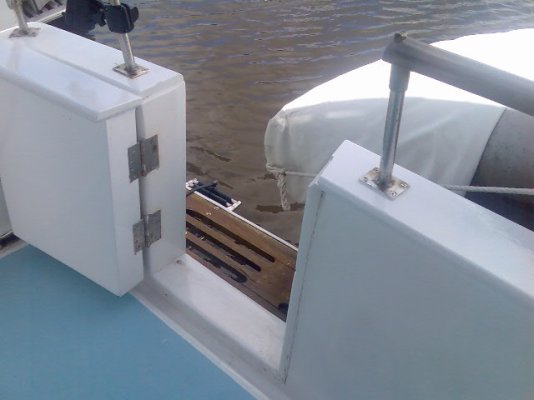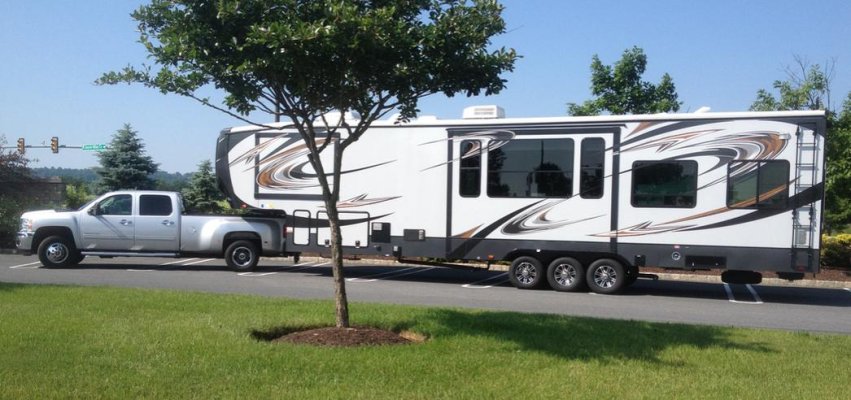Just a few thought come to mind to toss in here, as we have been caught out in the odd 'blow'.
Yes, the inflatable PFD would have been sufficient - never wear one under a standard jacket - it's one or the other, but as PSNeeld said, movement much less restricted in the inflatable.
I would think if there is a real possibility of going overboard to also have a line attached at least the length of the boat, and preferably very securely attached at the stern and near the boarding ladder, and no point doing this really unless you organise things so the boarding ladder is accessible with the dink in place in my view, even if it means mounting the dink a bit off centre, like in the pic. The idea is function, not looks. This is totally relevant to any man overboard scenario. Almost impossible to get someone back on board, or for you to climb back on board, if you can't self deploy and access the ladder. Means we can swim also without launching the dink as well.
Having seen a yacht in company with us in a blow get their anchor strop/hook jammed in the bow roller in a panic up-anchor scenario and nearly lose their boat as a consequence, (pulled off by Marine Rescue when keel was thumping bottom), I have a secondary roller mounted next to the main anchor roller, and always use that for the strop or a mooring ball line, so the anchor stays where it needs to be, secure, and ready to deploy instantly if needed. I use a single strop with a section covered by conduit where it crosses the roller to prevent chafe.
Definitely a good idea to regularly check a proper marine forecast, and try to move in anticipation, rather than in response to, worsening conditions, and read the weather charts yourself, so you can work out trends. Get a book on weather map interpretation if necessary, or it's probably on the net. It's fun to know how to work out wind strengths, probable direction changes, etc.
Finally, if caught out, and things not too terrible, maybe better to just stay put, especially if on a mooring - they are usually more secure than an anchor. Just saying'



